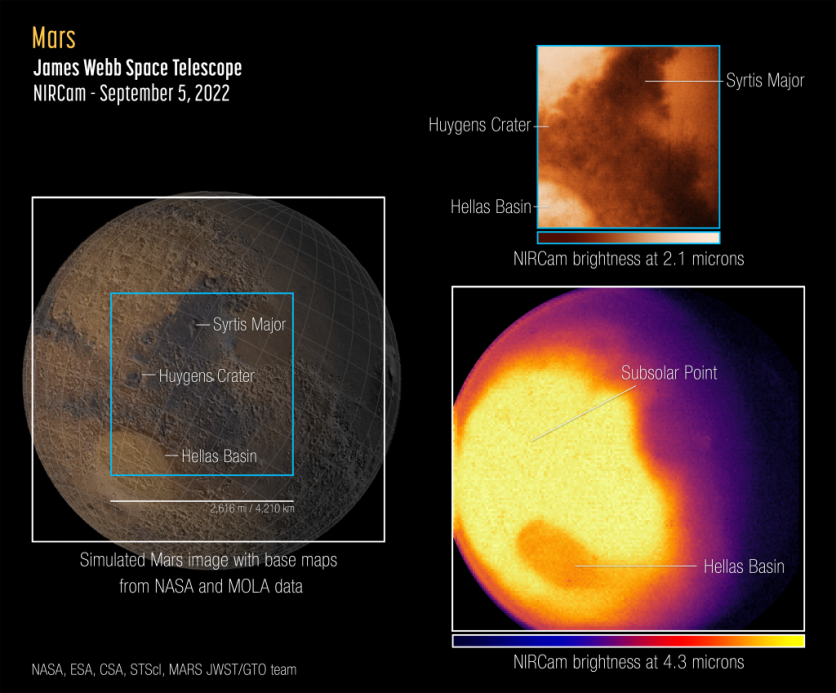NASA's James Webb Space Telescope zooms in on Mars for the first time, capturing pictures and spectra of the Red Planet on Sept. 5.
The powerful telescope provides a unique perspective through its infrared sensitivity, adding to a plethora of Martian information gathered by orbiters, rovers, and other telescopes.
Webb's special observation station at the Sun-Earth Lagrange point 2 (L2), which is the area of the sunny side that is facing the telescope, offers a view of Mars' observable disc.
NASA said that as a result, Webb could take photos and spectra with the spectral resolution required to investigate short-lived phenomena such as weather patterns, seasonal changes, and dust storms occurring on Mars.
Capturing the Bright, Red Planet
The Red Planet is one of the brightest objects in the night sky in terms of both visible light, which can be seen by human eyes, and the infrared light that Webb is meant to detect.
This presents unique difficulties for the observatory, which was designed to pick up the incredibly feeble light from the universe's most remote galaxies.
But by employing very brief exposures, detecting only a portion of the light that reached the detectors, and using specialized data analysis methods, astronomers could compensate for Mars' extraordinary brightness, according to NASA.
The Near-Infrared Camera (NIRCam) on Webb's first Mars photos highlights a section of the planet's eastern hemisphere in two different infrared light wavelengths or colors.

Read also : NASA's James Webb Space Telescope Captures the Sharpest, Most Detailed Image of the Orion Nebula
Mars in Spectroscopy
The Webb team's publication of the first near-infrared spectrum of Mars further proved the newly-minted telescope's capacity to study the Red Planet using spectroscopy.

NASA noted that the spectrum displays the subtle variations in brightness between hundreds of different wavelengths that represent the planet as a whole, as opposed to the images, which show differences in brightness incorporated over several wavelengths from place to place across the planet at a specific day and time.
Astronomers will study the properties of the spectrum to learn more about the surface and atmosphere of the Red Planet.
A preliminary spectrum investigation reveals a wealth of spectral signatures that provide details about the atmosphere, icy clouds, types of rocks on the planet's surface, and dust.
NASA said that the Mars team would later use these images and spectroscopic data to investigate regional variations on the planet and look for trace gases like methane and hydrogen chloride that may be present in the atmosphere.
This article is owned by Tech Times
Written by Joaquin Victor Tacla
ⓒ 2025 TECHTIMES.com All rights reserved. Do not reproduce without permission.




